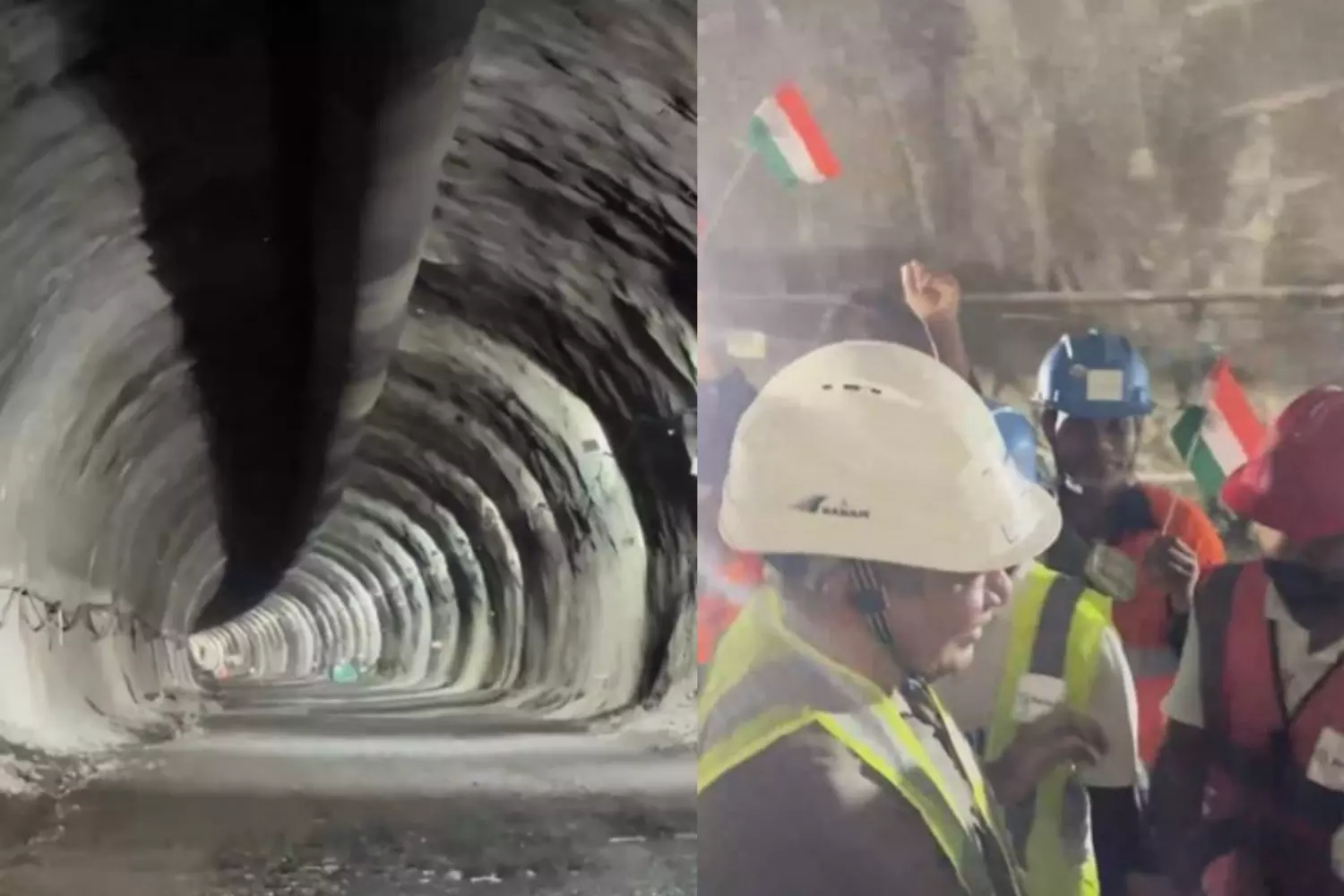
Mumbai-Ahmedabad bullet train: 4.88-km tunnel boring done; know all about project
Vaishnaw appreciated the progress of the project, saying this tunnel is a part of the total 21-km-long tunnel, out of which seven km passes through the sea

In a significant achievement in the Mumbai-Ahmedabad bullet train project, Railway Minister Ashwini Vaishnaw on Saturday (September 20) initiated the breakthrough of a 4.88-kilometre-long tunnel in Thane near Mumbai.
Standing at one of the openings of the tunnel, Vaishnaw pushed the button and triggered a controlled dynamite blast to break through its final layer, completing nearly five km of excavation.
Also read: Mumbai-Ahmedabad bullet train to be operational by 2028: Fadnavis
This 4.88 km tunnel runs between Ghansoli and Shilphata in Maharashtra.
What Vaishnaw said
“Major milestone for the Bullet Train Project! Breakthrough achieved in the 4.88 km section of Bharat’s first undersea tunnel under Thane Creek (sic),” Vaishnaw posted on his X (formerly Twitter) handle with a 46-second clip of him congratulating the workers amid chants of ‘Bharat Mata Ki Jai’.
Briefing mediapersons present at the site to cover the event, Vaishnaw called it a "landmark achievement" and reiterated that the 50-km-long first section between Surat and Billimora will be completed by December 2027.
Also read: Gujarat: Three workers killed in collapse of structure on bullet train route
Vaishnaw appreciated the progress of the project, saying this tunnel is a part of the total 21-km-long tunnel, out of which seven km passes through the sea. This 21-km tunnel is being constructed by the Afcons Infrastructure Limited.
"The Afcons Infrastructure Limited navigated through significant challenges, including tough rocky strata of Deccan Trap, limited overburden, the presence of utilities, among others. Afcons, in collaboration with NHSRCL, successfully overcame these difficulties while strictly adhering to safety standards," the company's spokesperson said.
‘Drill and blast’ method
The 508-km-long project will run between Mumbai and Ahmedabad.
Officials said that the excavation was done through the ‘drill and blast’ method, and henceforth, a tunnel-boring machine will be used.
About India’s first bullet train project
The Mumbai-Ahmedabad bullet train project spans across 508 kilometres, and will offer fast connectivity between Maharashtra and Gujarat. There will be 12 stations, eight in Gujarat and four in Maharashtra.
“After starting from Bandra Kurla Complex (BKC) area in Maharashtra, the high-speed train running at a speed of 320 km/h will revolutionise intercity travel in the region and will integrate the economies of Mumbai, Vapi, Surat, Anand, Vadodara & Ahmedabad. It would provide high speed rail connectivity to industrial towns of Boisar, Bharuch & Ankleshwar and upcoming Vadhvan Port (through Boisar Station). It will have stops at 10 cities in between namely Thane, Virar, Boisar, Vapi, Bilimora, Surat, Bharuch, Vadodara, Anand, Ahmedabad and will terminate at Sabarmati,” the National High Speed Rail Corporation Limited (NHSRCL) said on its website.
The entire journey will be completed in about 2 hours 7 minutes with limited stops (at Surat, Vadodara and Ahmedabad), which is substantially less than the time taken by conventional trains or road journeys.
The estimated cost of the project is Rs 1,08,000 crore (USD 17 billion) excluding taxes and being executed with Official Development Assistance (ODA) Loan assistance from Japan International Cooperation Agency (JICA), said NHSRCL.
About 81 per cent of the total cost of the project will be funded by the Government of Japan through JICA. The remaining project cost will be funded by Government of India. According to the equity structure of the Special Purpose Vehicle, 50 per cent is held by the Government of India (GoI), through the Ministry of Railways, and 25 per cent each by the Government of Maharashtra and the Government of Gujarat.
The majority of approved funding for the Mumbai-Ahmedabad bullet train project is from the JICA through an ODA loan. The tenure of the loan is 50 years with a moratorium of 15 years.
Image: National High Speed Rail Corporation Limited (NHSRCL)

